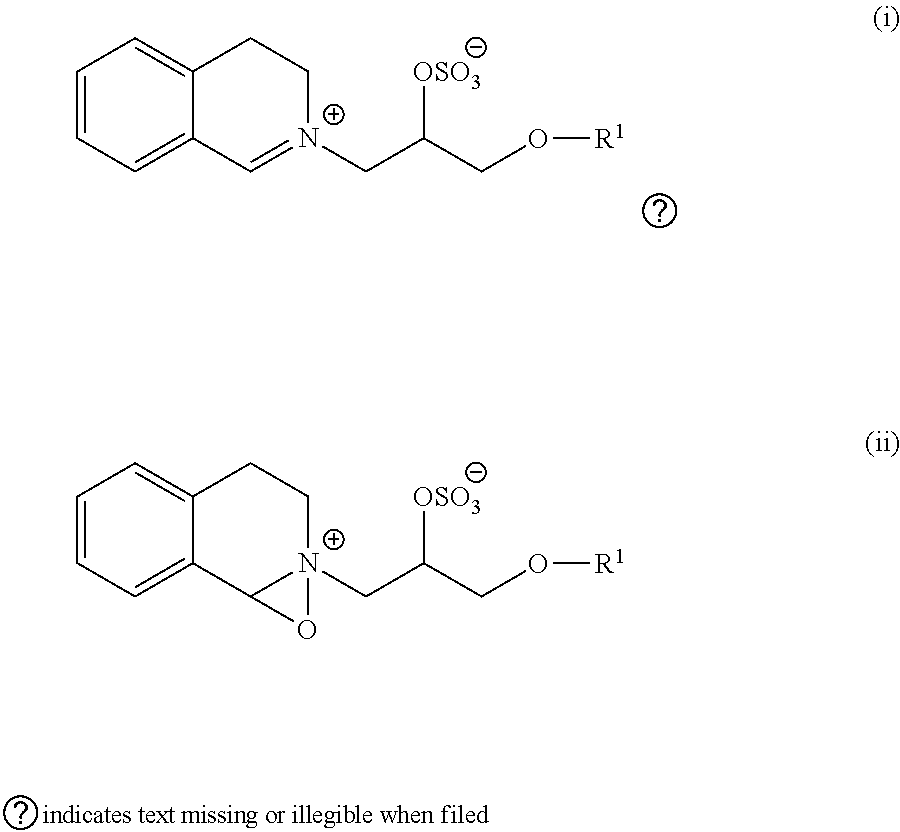Use of polypeptides
a polypeptide and polypeptide technology, applied in the field of polypeptides, can solve the problems of biofilm being a source of bad odour, difficult to remove soil, and exposure to bacteria and dead cells from the body of the user and the rest of the environment, so as to prevent or reduce the redeposition of soil released, prevent or reduce the tendency of dye transfer, effect of reducing pilling
- Summary
- Abstract
- Description
- Claims
- Application Information
AI Technical Summary
Benefits of technology
Problems solved by technology
Method used
Image
Examples
example 1
e Pre-Wash of the Textiles
[0350]A full scale pre-wash under the EU conditions (washing in a front loader washing machine) of the swatches made of different textile material was conducted.
[0351]The detergent composition was placed in the bottom of the wash drum in the form of a “washing ball” (both liquid and powder detergents). The textile to be washed consists of clean unused and unworn white cloth made of either cotton, polyester or cotton / polyester. The pre-washed swatches made of cotton was coded as WFK 10A, polyester-cotton as WFK 20A, and polyester as WFK 30A.
[0352]Two pieces of approx. 1 m×25 cm of each type of the textiles were named as the control group and the test group and washed separately. In the test groups, unused and unworn textiles were added to each wash together with 20 g Model Detergent A comprising 1.31 mg DNase having the amino acid sequence of SEQ ID NO: 13; while in the control groups, corresponding unused and unworn textiles were added to wash together with...
example 2
the Inhibition of Biofilm Growth on the Prewashed Swatches
Isolating Laundry Specific Bacterial Strains
[0361]One strain of Brevundimonas sp. isolated from laundry was used in the present example. The Brevundimonas sp. was isolated during a study, where the bacterial diversity in laundry after washing at 15, 40 and 60° C., respectively, was investigated. The study was conducted on laundry collected from Danish households. For each wash, 20 g of laundry textiles (tea towel, towel, dish cloth, bib, T-shirt armpit, T-shirt collar, socks) in the range 4:3:2:2:1:1:1 was used. Washing was performed in a Launder-O-Meter (LOM) at 15, 40 or 60° C. For washing at 15 and 40° C., Ariel Sensitive White & Color was used, whereas WFK IEC-A* model detergent was used for washing at 60° C. Ariel Sensitive White & Color was prepared by weighing out 5.1 g and adding tap water up to 1000 ml followed by stirring for 5 minutes. WFK IEC-A* model detergent (which is available from WFK Testgewebe GmbH) was pre...
example 3
the Malodour on the Prewashed Swatches
[0380]The prewashed swatches prepared according to Example 1 were infiltrated with a VOC (volatile compounds) solution comprising a mixture of four volatile molecules comprising hexanal, e-2-nonenal, e,e-2,4-decadienal, and 2-methoxyphenol as described under Assay II. These VOCs serve as markers for the malodour on laundry. The infiltrated swatches were then further washed in the MiniLOM by using either 1) detergent compositions comprising DNase for the test group, or 2) same detergent composition comprising no DNase for the control group. The MiniLOM mimics the normal wash cycles. After the miniLOM wash the swatches were tested for level of remaining VOC.
VOC Infiltration of the Swatches
[0381]A mixed VOC solution comprising hexanal (10 nM), e-2-nonenal (3 mM), e,e-2,4-decadienal (3 mM) and 2-methoxyphenol (12.5 mM) was added to the prewashed swatches of 2 cm in diameter at the amount of 50 μl. The swatches were placed in a 20 mL glass vial and t...
PUM
| Property | Measurement | Unit |
|---|---|---|
| temperature | aaaaa | aaaaa |
| diameter | aaaaa | aaaaa |
| Temperature | aaaaa | aaaaa |
Abstract
Description
Claims
Application Information
 Login to View More
Login to View More - R&D
- Intellectual Property
- Life Sciences
- Materials
- Tech Scout
- Unparalleled Data Quality
- Higher Quality Content
- 60% Fewer Hallucinations
Browse by: Latest US Patents, China's latest patents, Technical Efficacy Thesaurus, Application Domain, Technology Topic, Popular Technical Reports.
© 2025 PatSnap. All rights reserved.Legal|Privacy policy|Modern Slavery Act Transparency Statement|Sitemap|About US| Contact US: help@patsnap.com

